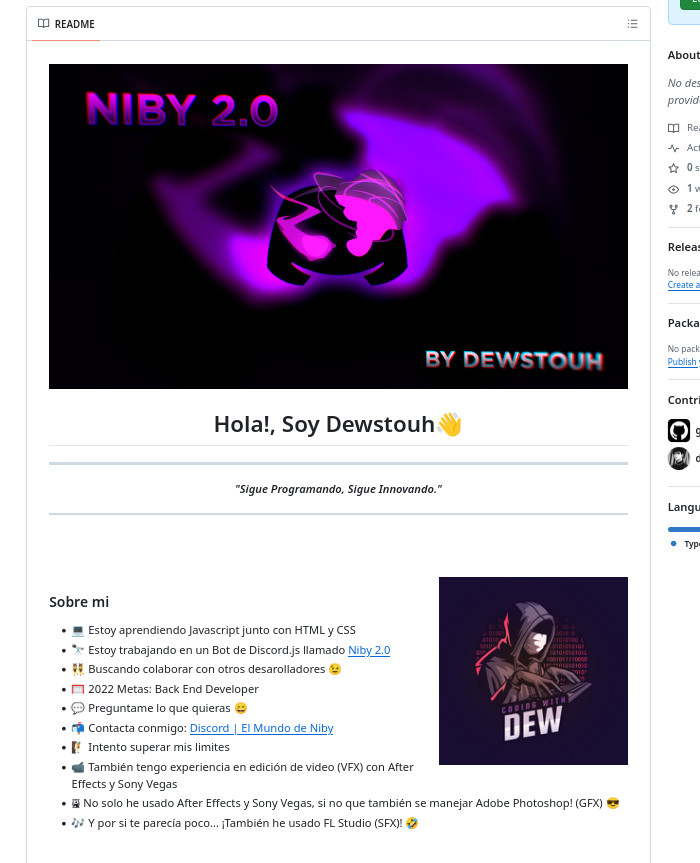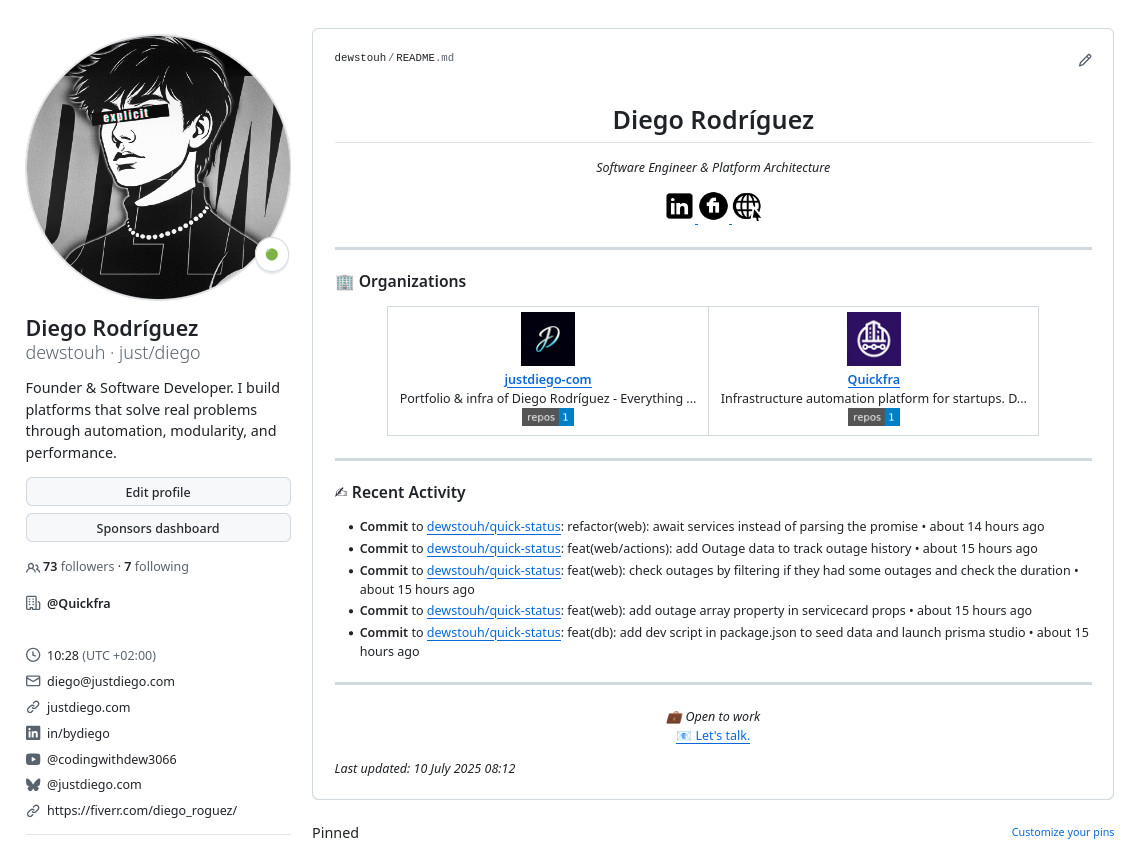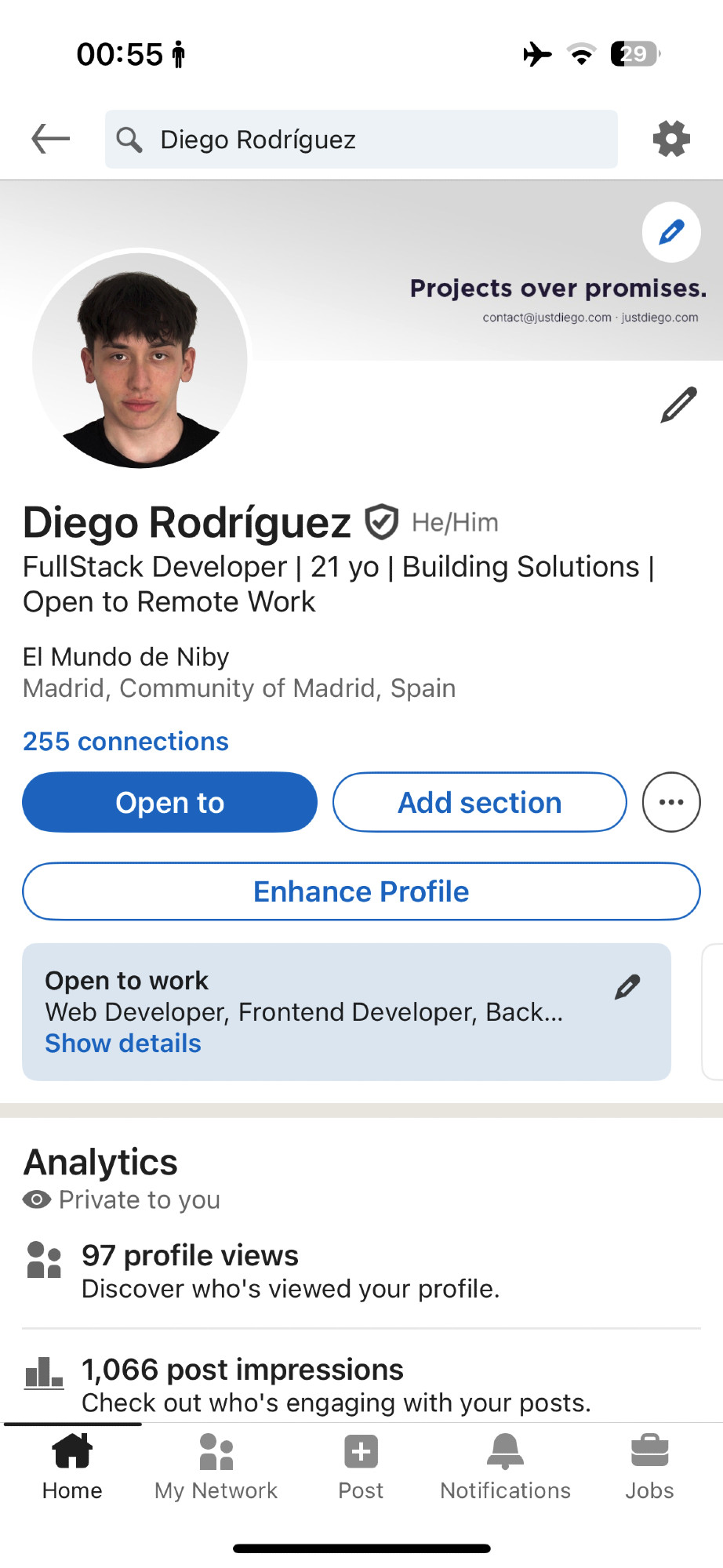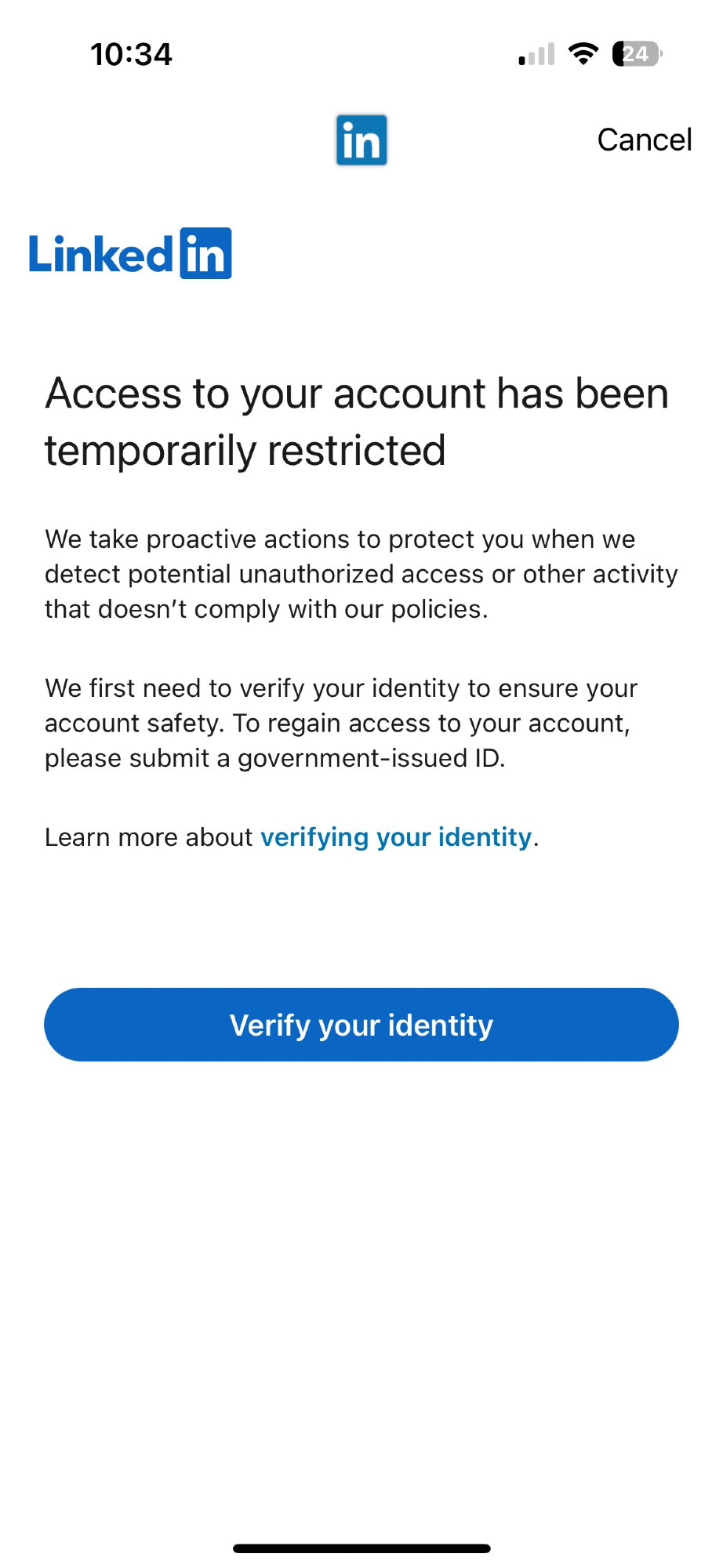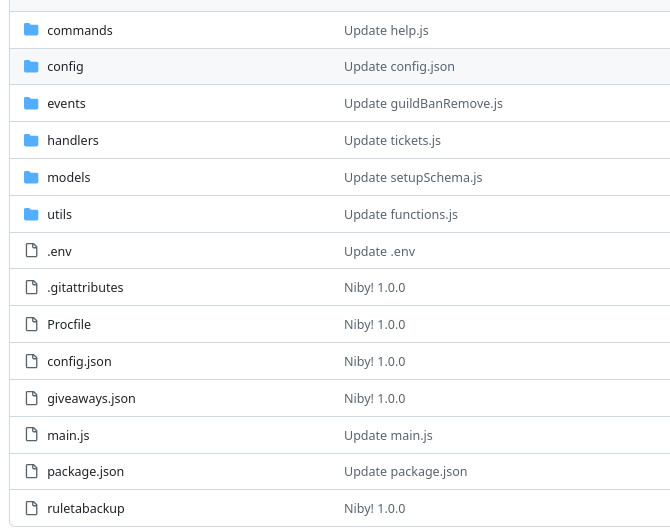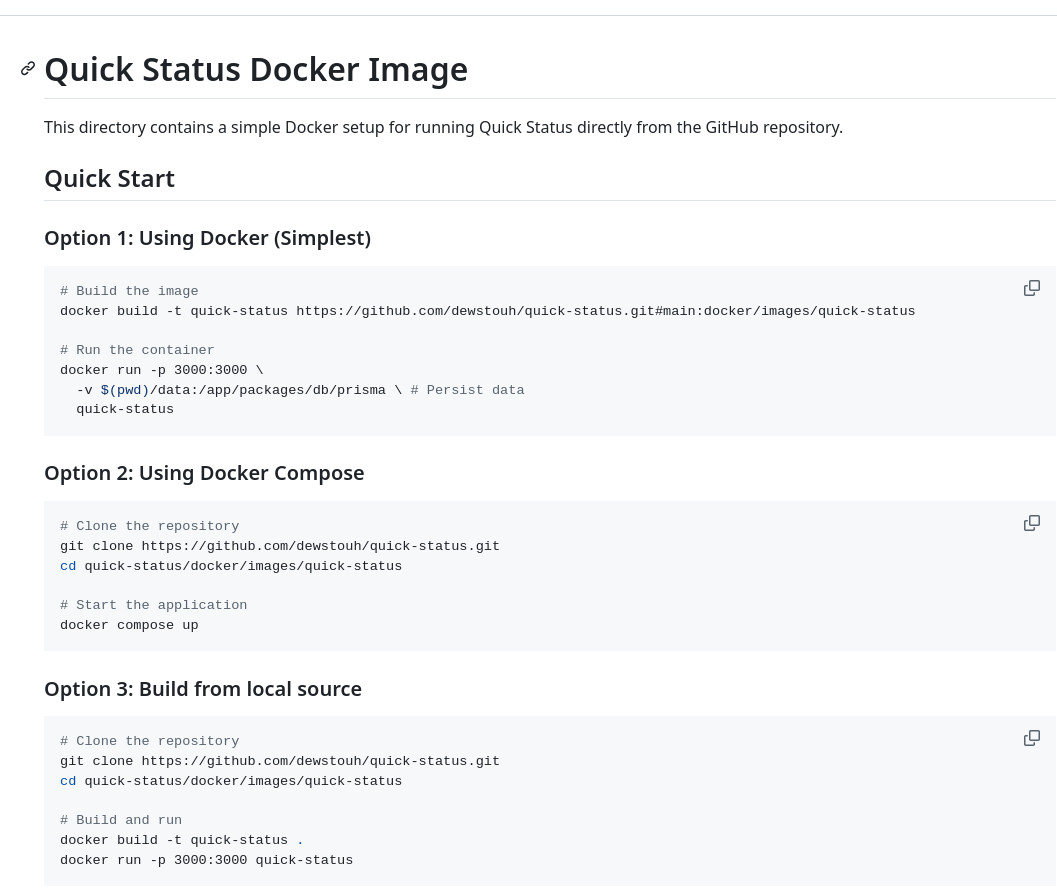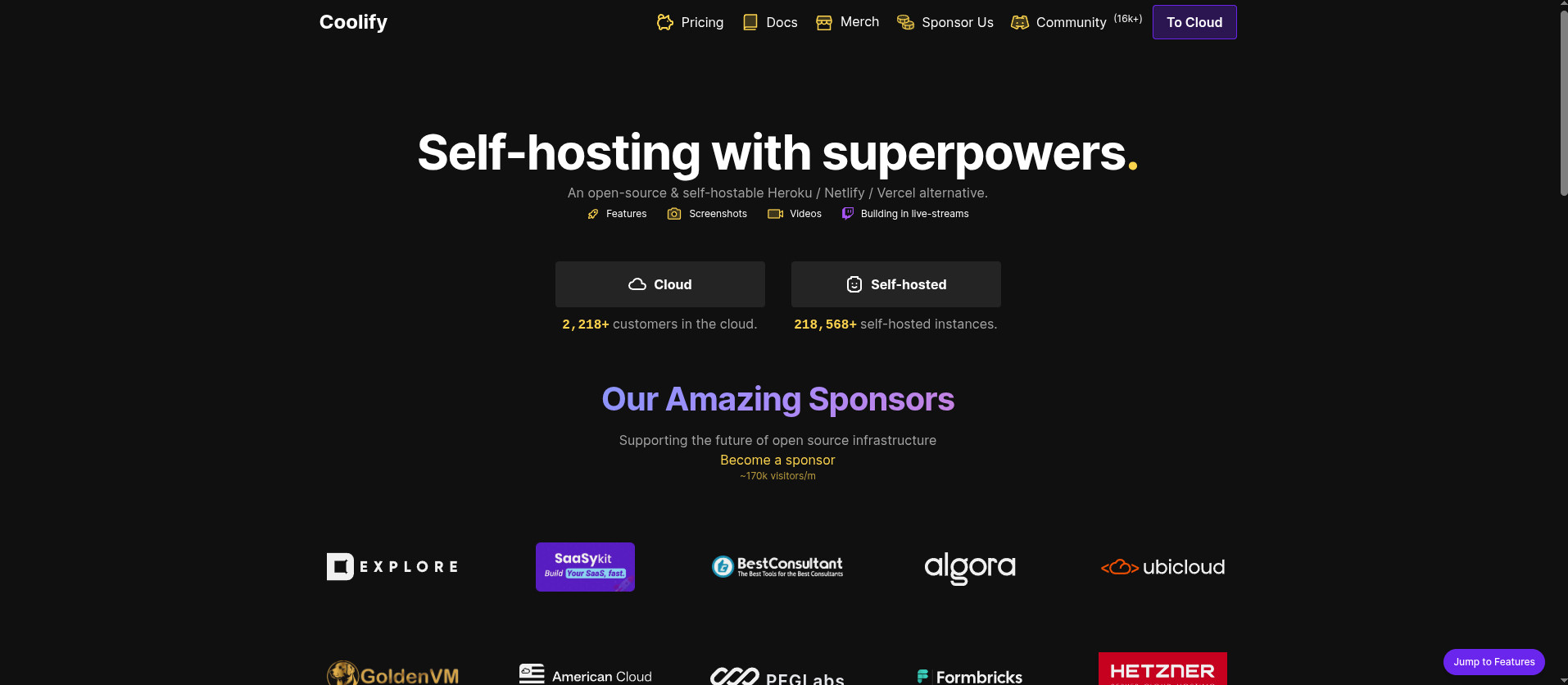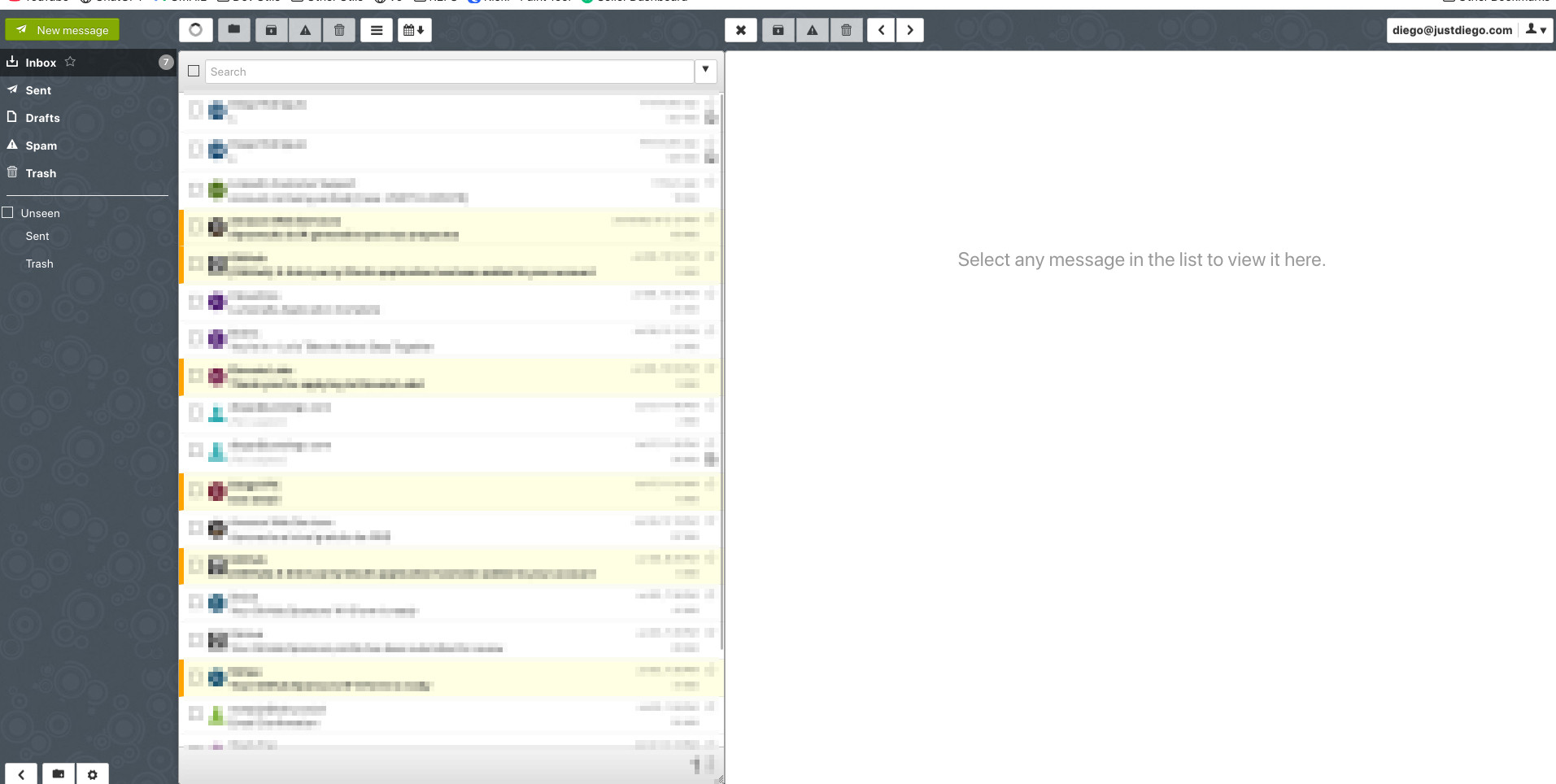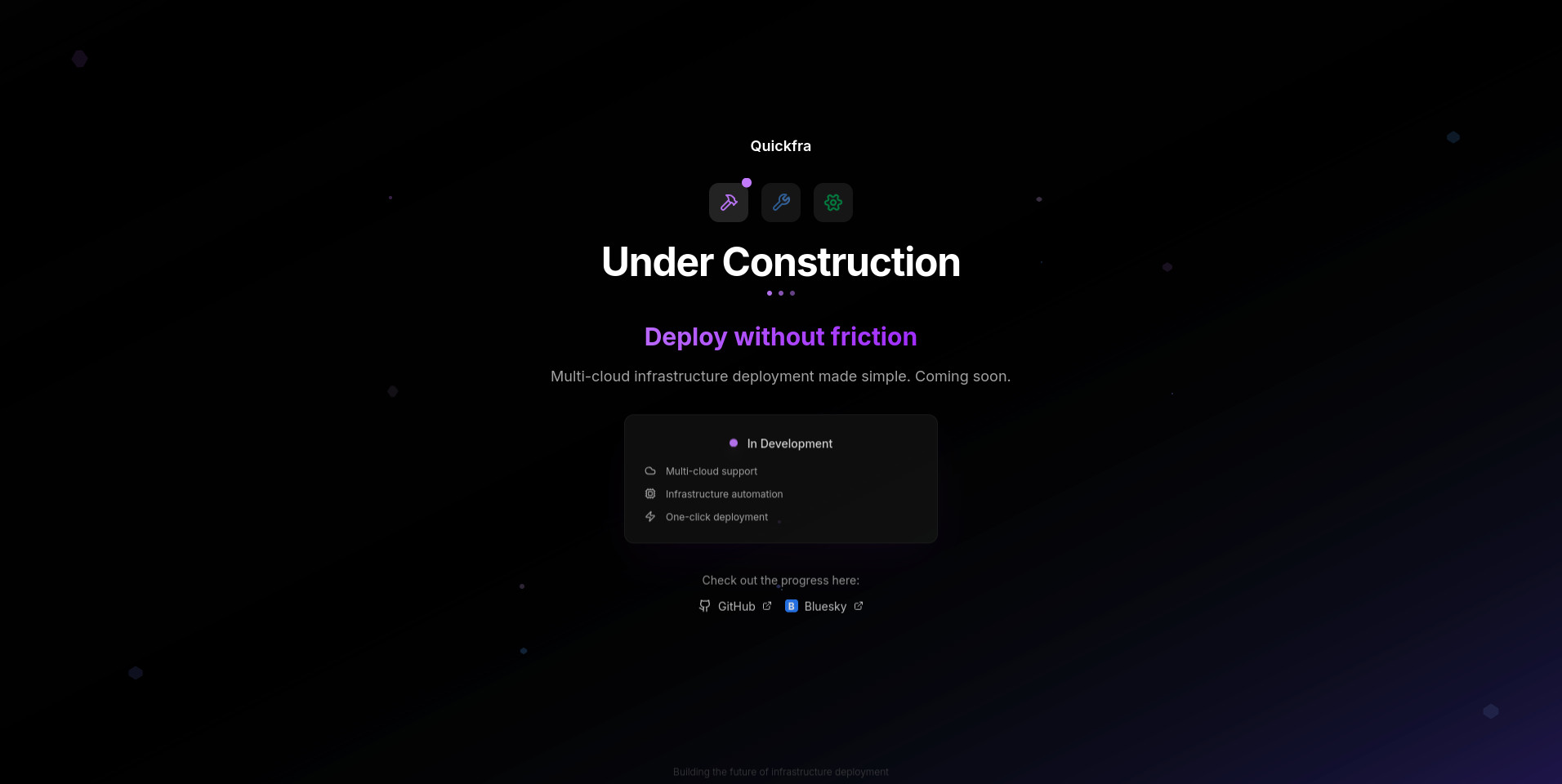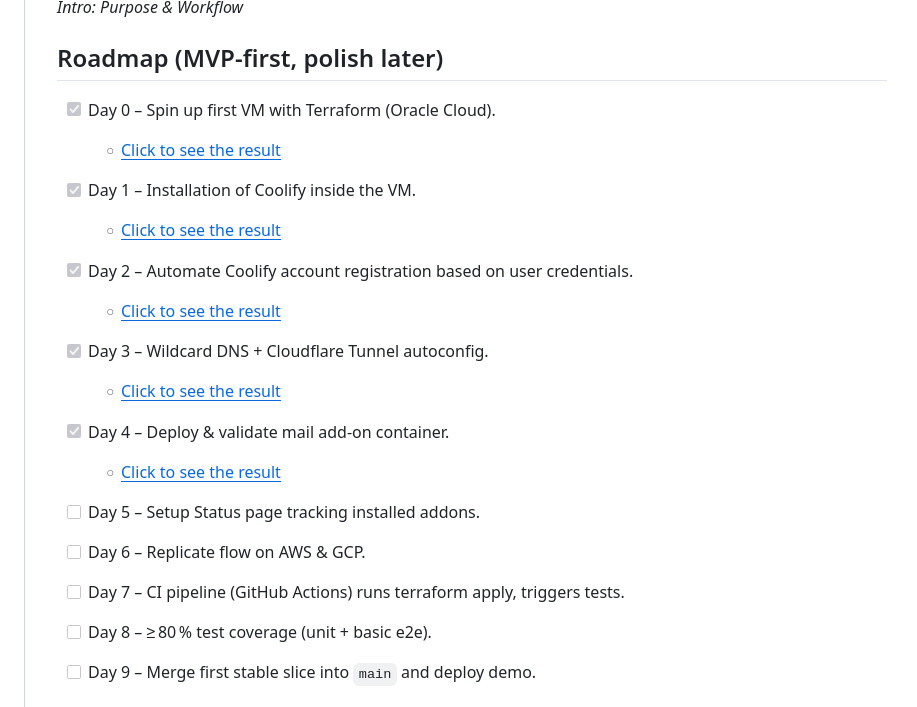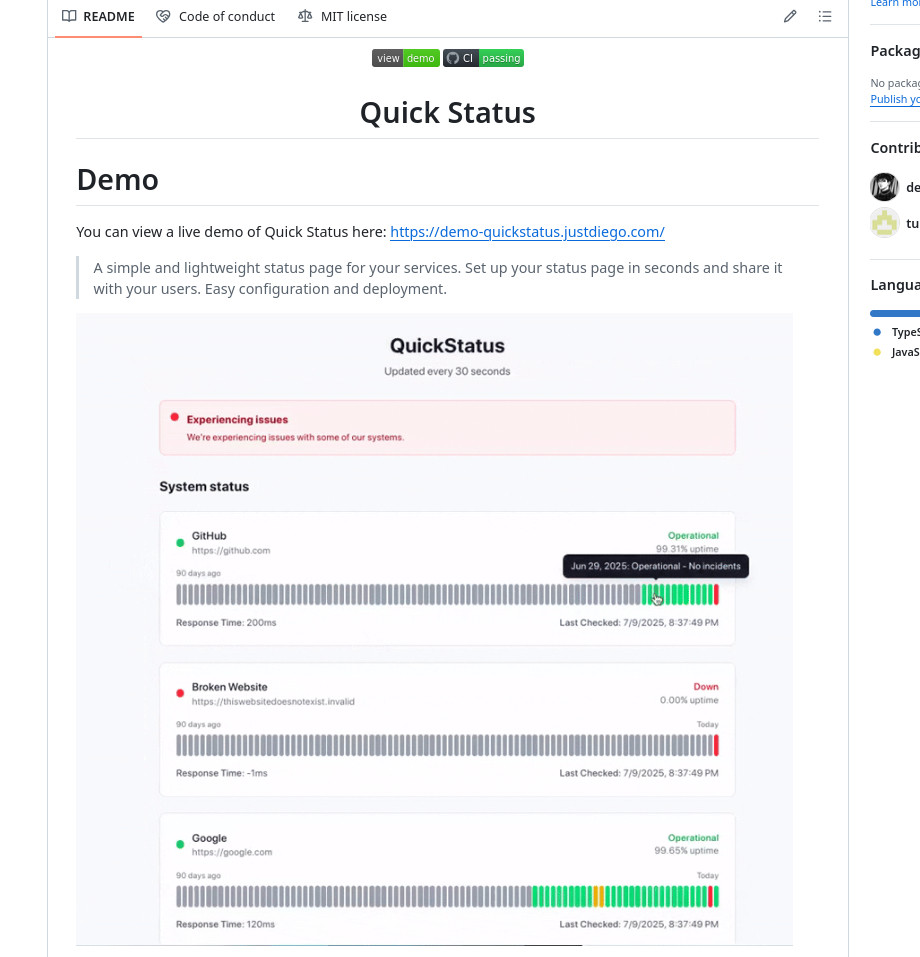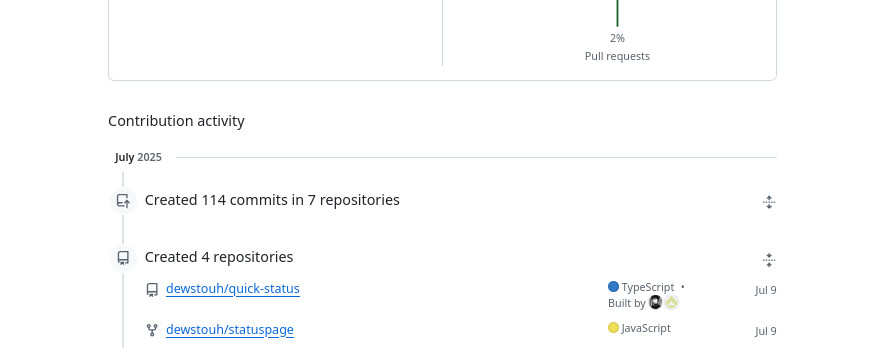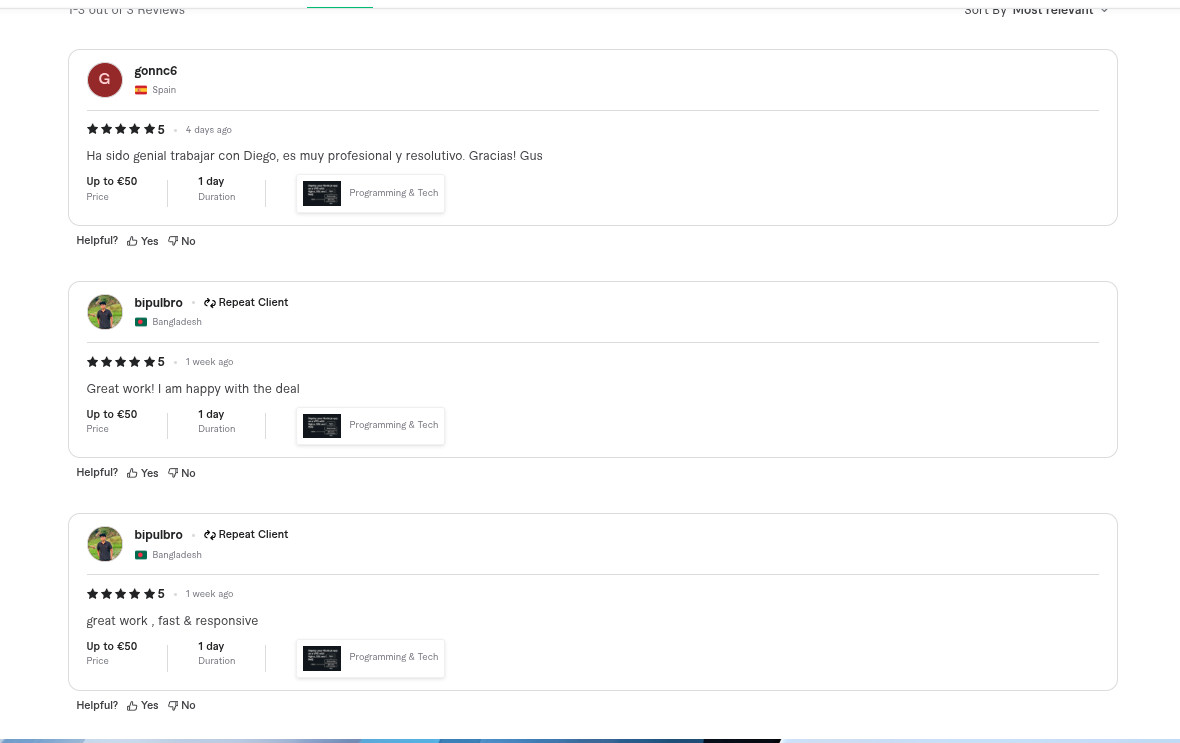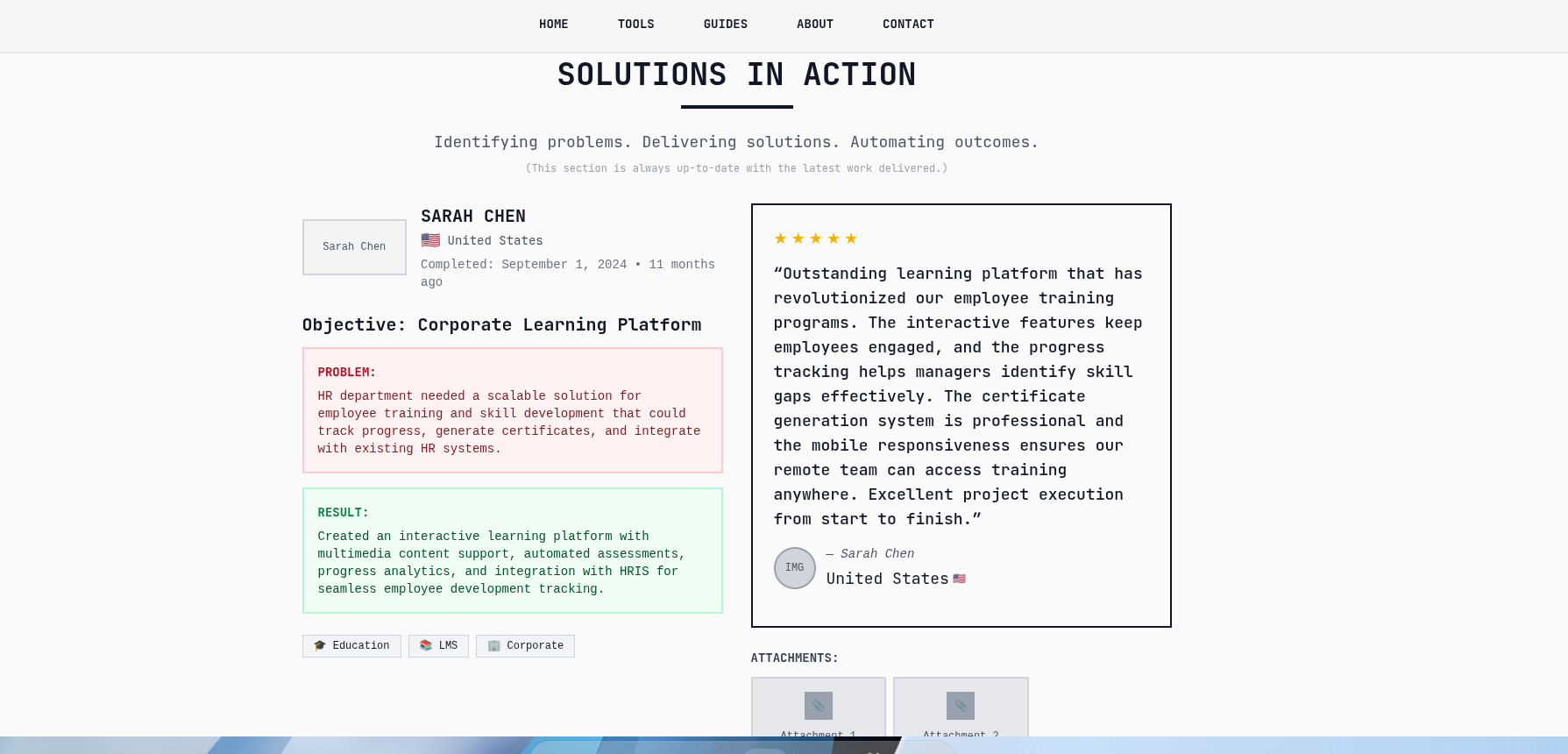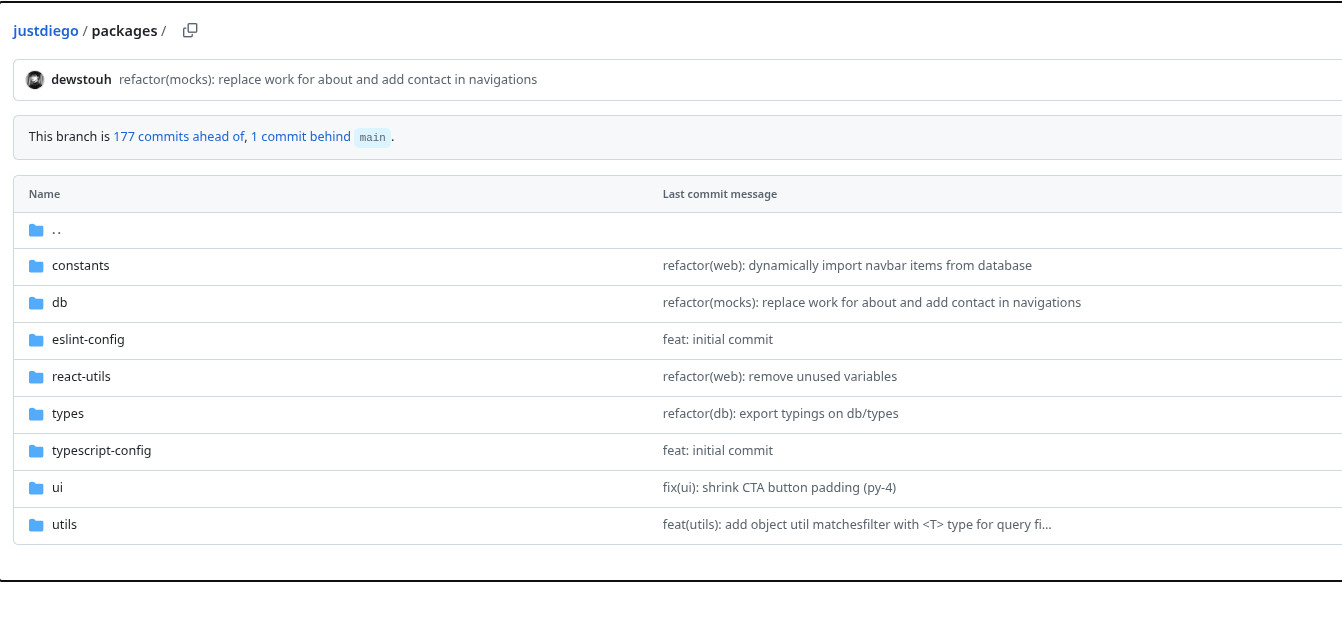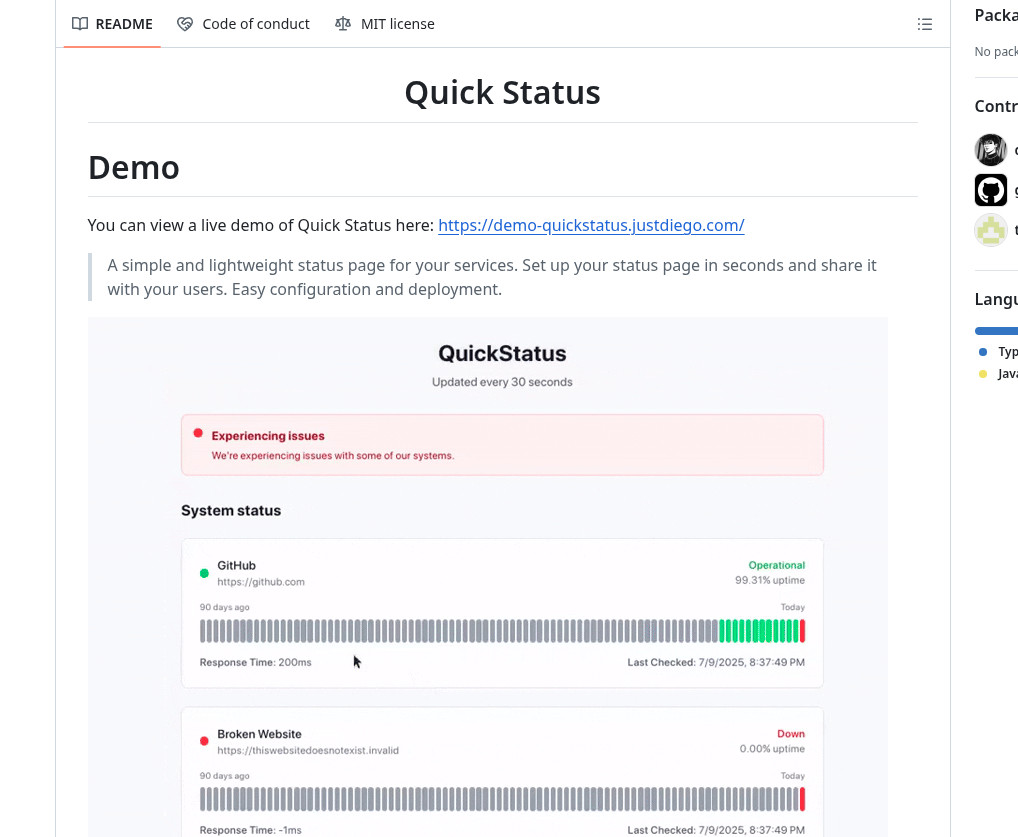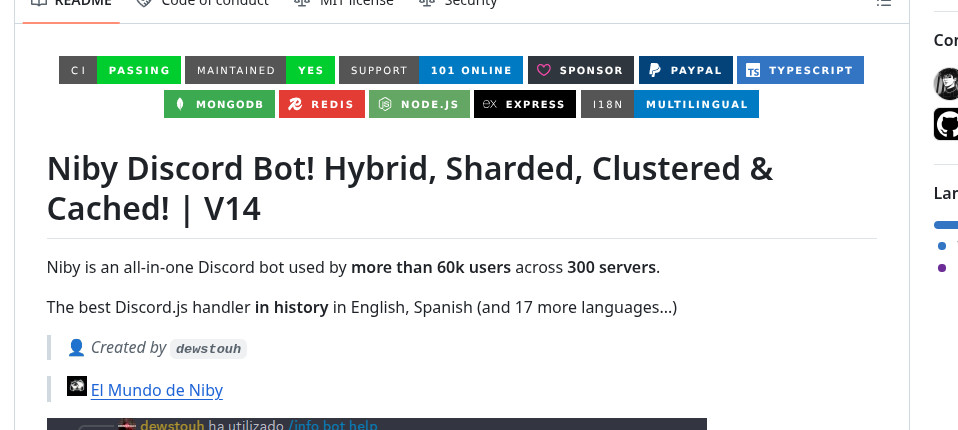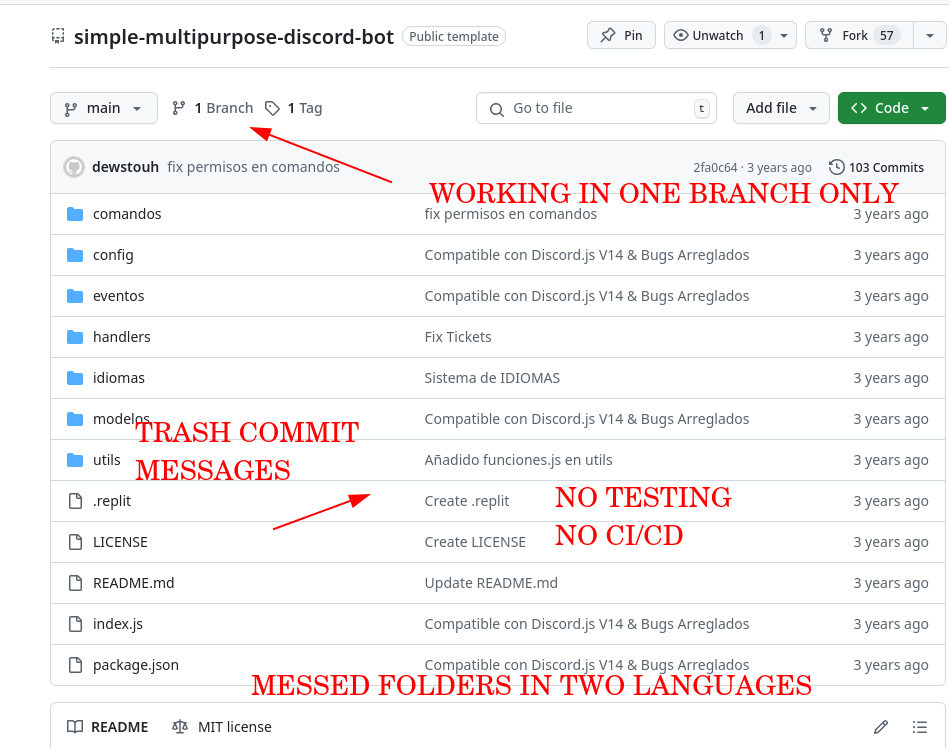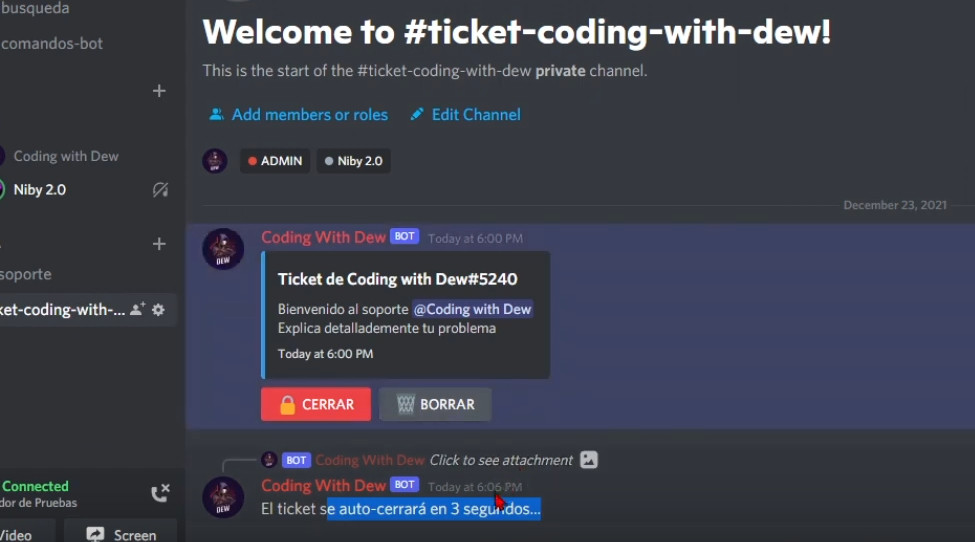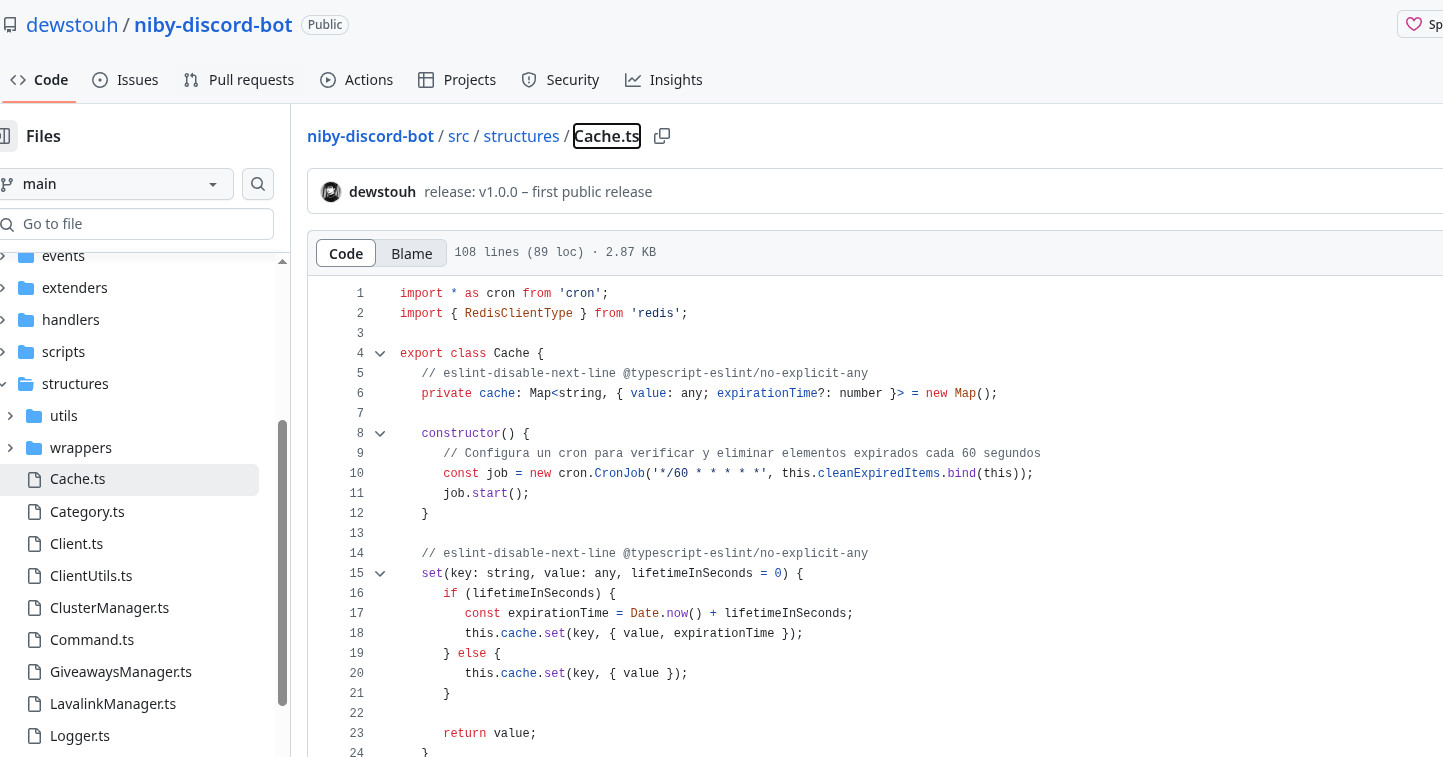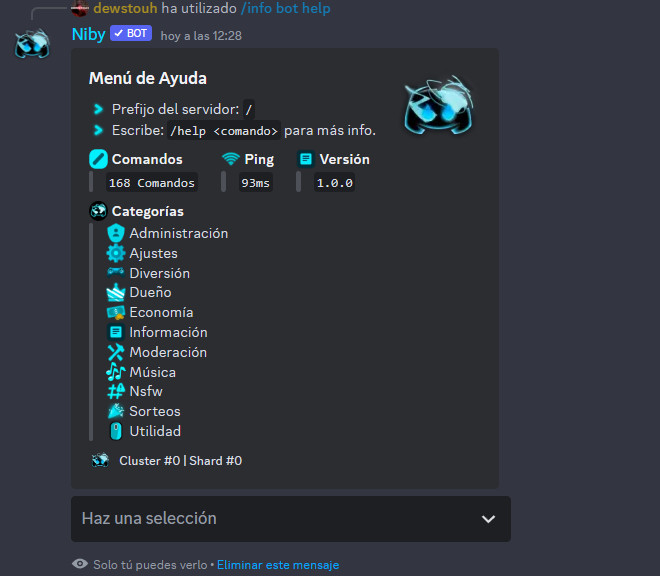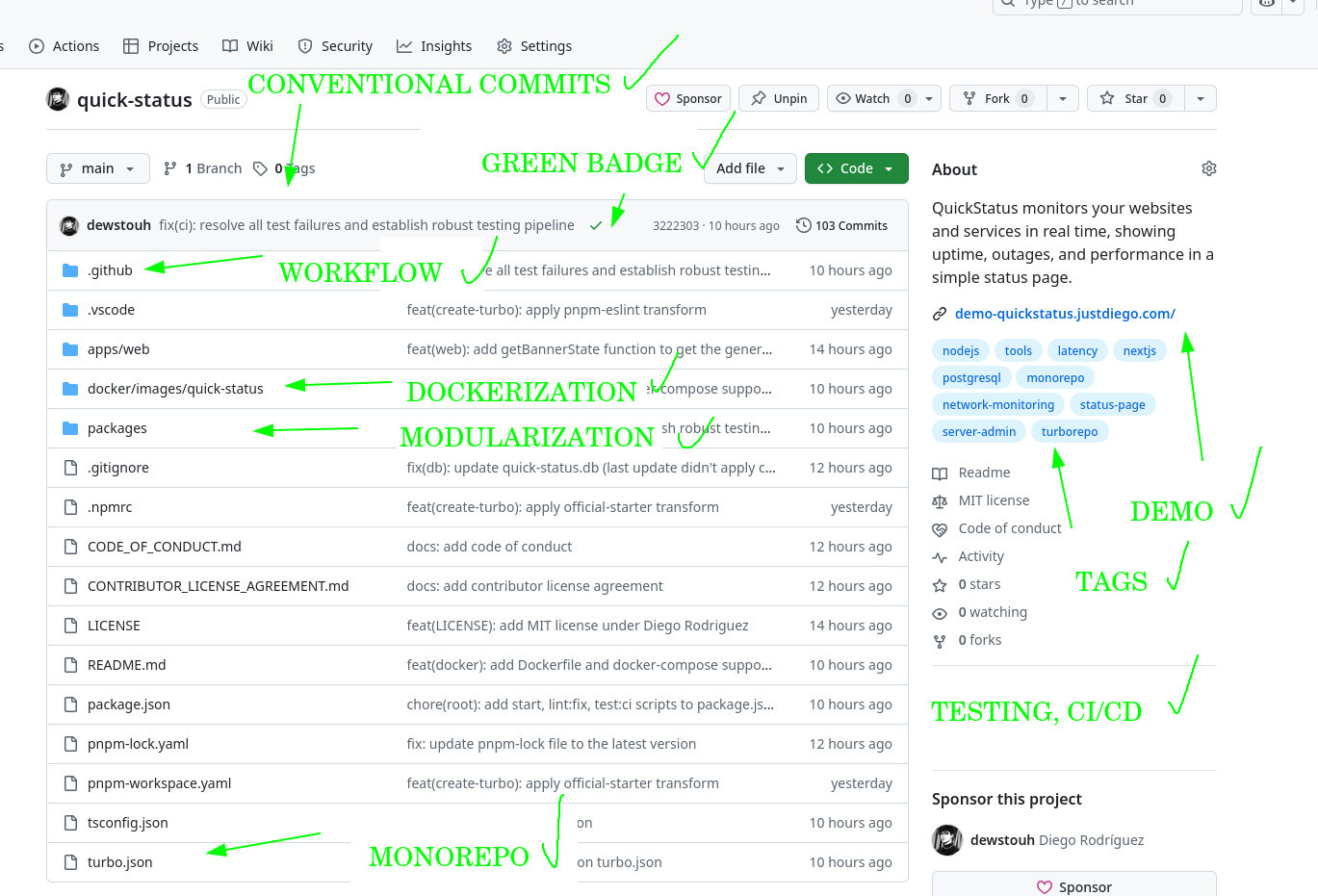ABOUT
justdiego.com exists to expose, fix, and automate what’s holding your business back. Born from actual pain, built for survival, focused on results.

About
What is justdiego.com?
justdiego.com is a platform where I showcase my work focused on business solutions and freelance projects.
Instead of talking about who I am and what I do, I just show it.
It’s not another portfolio or showcase.
From software development to solutions that save time and money.
That's pretty much a summary of it.
The Truth
In just 2 months, driven by pure hunger to escape mediocrity and get a real job, I’ve built and shipped more than most people do in a year.
No motivation, just discipline and pain.
I focused on what's important:
- Real problems
- Real solutions
- Real results
2 months.
And this is just the beginning.




How It All Began
Two months ago, I was stuck.
No results, no discipline, just excuses and frustration.
My work was a mess:
Trash commit messages, no structure, no testing, no CI/CD—
Just another amateur “developer” like everyone else crying for a chance.
Just look at how my GitHub profile looked:
One day I decided to stop lying to myself and start acting like my future depended on it, because it fucking does.
I stopped waiting for motivation.
I built habits.
I pushed code every day, learned new tools, broke things, fixed them, and kept moving.
This is how my profile looks now:
Then I decided to create a LinkedIn account.
I started posting real progress, sharing what I was actually building, not just talking about it.
Companies started reaching out.
For the first time, my work was getting noticed, because it was real, and it was visible.
Out of nowhere, LinkedIn restricted my account.
No warning, no explanation.
All that momentum, gone overnight.
Did I stop? No.
I moved everything to other platforms, kept working, and doubled down.
You can ban an account, but you can’t ban relentless progress. That’s the difference.
After the LinkedIn restriction, I stopped wasting energy on it and started focusing on what actually matters:
Improving my code and building real projects.
But I realized that my code and my infra was fucked up, so I asked myself,
How can I make this perfect? How can I keep it clean and scalable?
So I deleted EVERYTHING and rebuilt it from the ground up.
I learned about real software engineering:
Clean architecture, modularization, automated testing, deployments, CI/CD, Docker, and infrastructure as code.
I forced myself to do each thing and to treat every project as if it were for production.
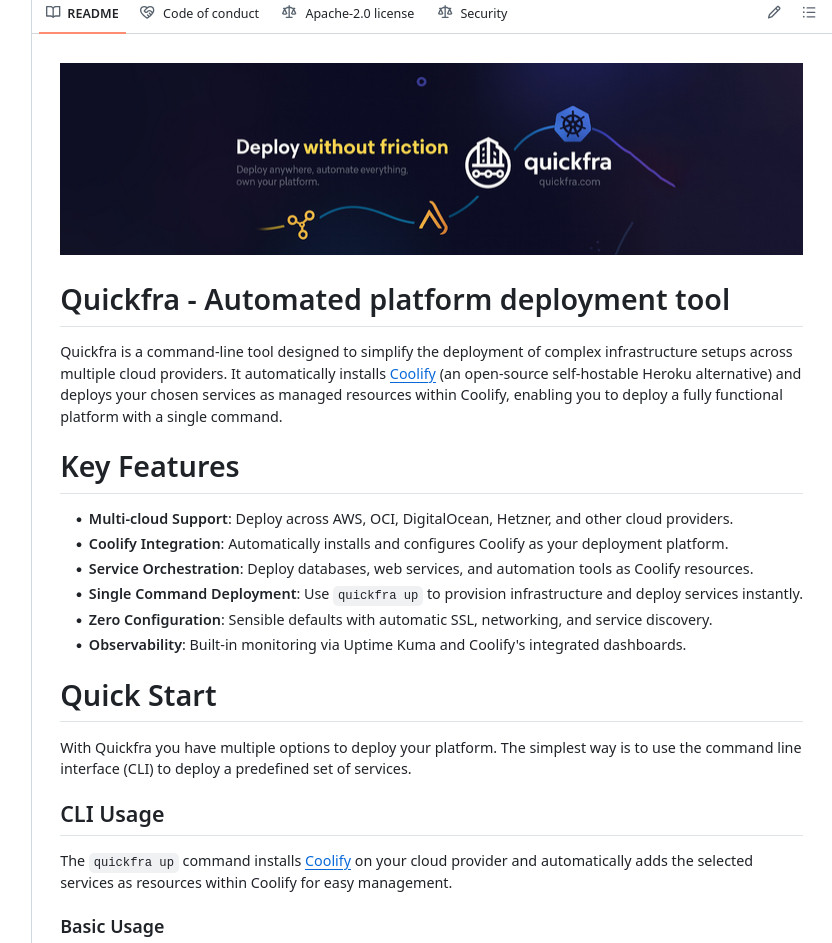
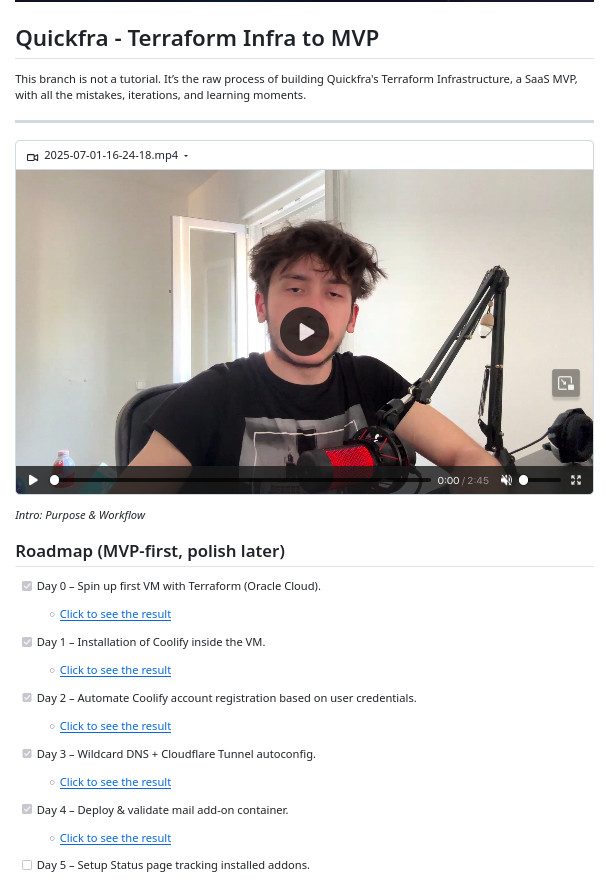
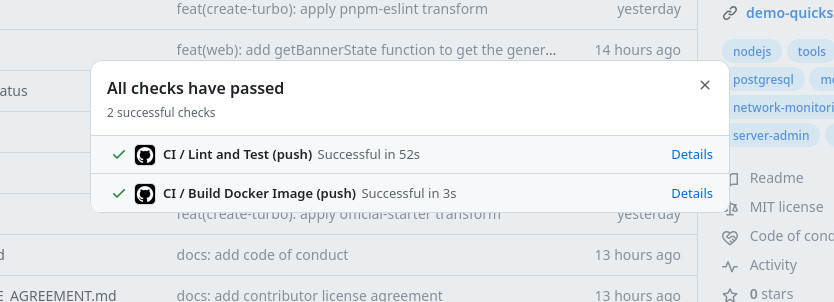
Automating Everything
I wanted to deploy my projects on my own server, but this time I wasn’t going to do it manually.
I started looking for a proper panel, something reliable, automated, and production-ready.
That’s when I discovered Coolify.
I learned how to set it up, integrated it with Docker, and automated my entire deployment process.
No more hacky scripts.
Just clean, repeatable deployments, with CI/CD hooked from GitHub to production in minutes.
I also deployed my mail server using Stalwart, a Status Page, and a Webmail client.
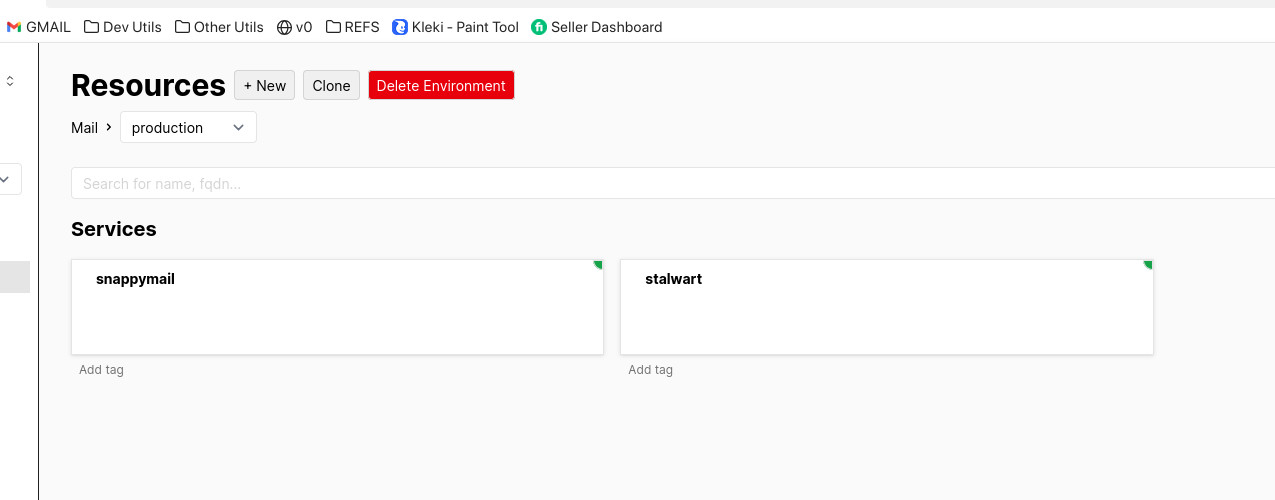
I fell in love with how everything was built.
It was just perfect for the case and perfect for small startups that want to move fast without bullshit.
That’s when the idea for QuickFra was born.
If I could automate all this for myself, why not build a platform that does it for everyone else?
So I got to work.
Started building, breaking, and rebuilding.
Every roadblock became a feature.
Every mistake became a lesson.
I wasn’t aiming for “good enough.”
I was building something I’d actually use myself, every day, in real production.
In 7 days, I learned Terraform from scratch, automated the creation of an Oracle Cloud instance, and set it up to install Coolify automatically under any custom domain I chose in the config using its API.
Next step in the roadmap: I wanted a status page to monitor all deployed services.
But most were way too bloated for what I needed.
So I built my own from scratch.
Simple, efficient. No bloat, no extras. Just a tool that does exactly what I need.
This is where Quick Status was born:

In less than 24 hours, I shipped QuickStatus.
A fully working open-source status page, built from scratch, launched with CI/CD, automated testing, and full Docker support from day one.
Using Prisma, Next.js, cronjobs, and a simple config file for tracking any service you want.
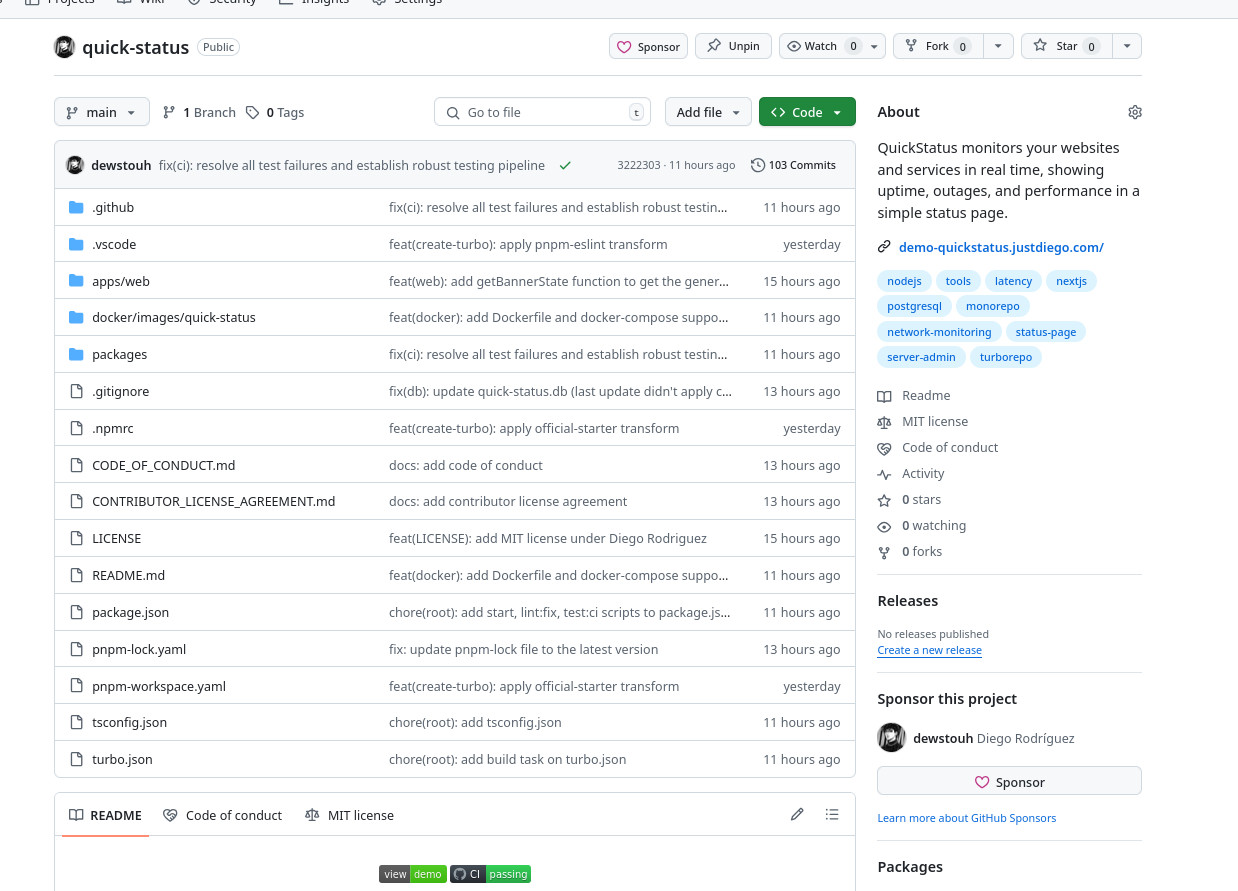
Without even realizing it, I started applying everything I learned out of necessity, with speed, efficiency, and results.
Every need became a project, every project a new skill.
No tutorials, just solving my own problems and building real solutions.
Just check it yourself.
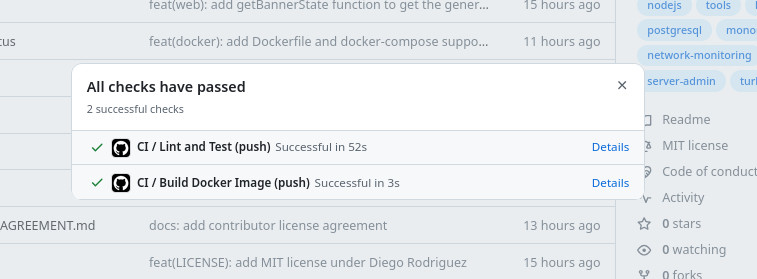
Real Clients. Real Solutions.
Then I got a few clients on Fiverr.
All 5-star reviews. Every single one left more than happy, because I delivered real solutions, with speed and efficiency.
The solutions were focused on deploying applications, fixing and tracking errors.
So I started building a portfolio:
Not to show off “pretty” projects, but to present real solutions I offer and exactly how I do it—and what people actually said after working with me.
Every page is focused on problems solved, processes automated, and results delivered.
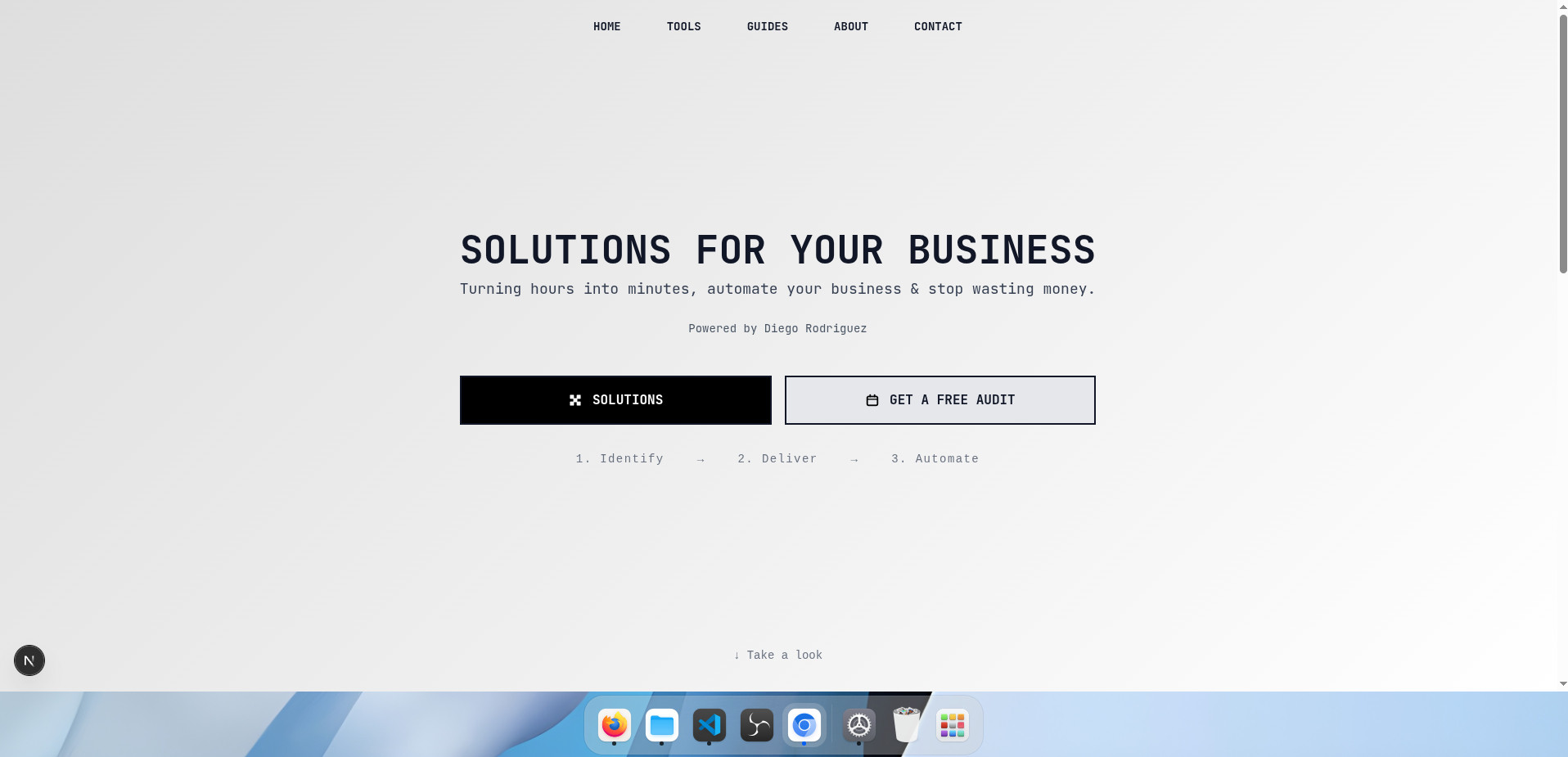
But I wasn’t just building a portfolio.
I was applying every bit of knowledge I’ve collected since the start.
Monorepo structure, caching with Prisma, automated testing, CI/CD, containerization, clean code.
Not a showcase, but a real platform built to production standards.

Every commit was intentional.
Clear, defined, and always with a purpose.
No random “fix bug” or “update stuff” garbage—every message documents real changes, improvements, and progress.
You can see the evolution, line by line.
Just structure, order, and a record of actual work getting done.
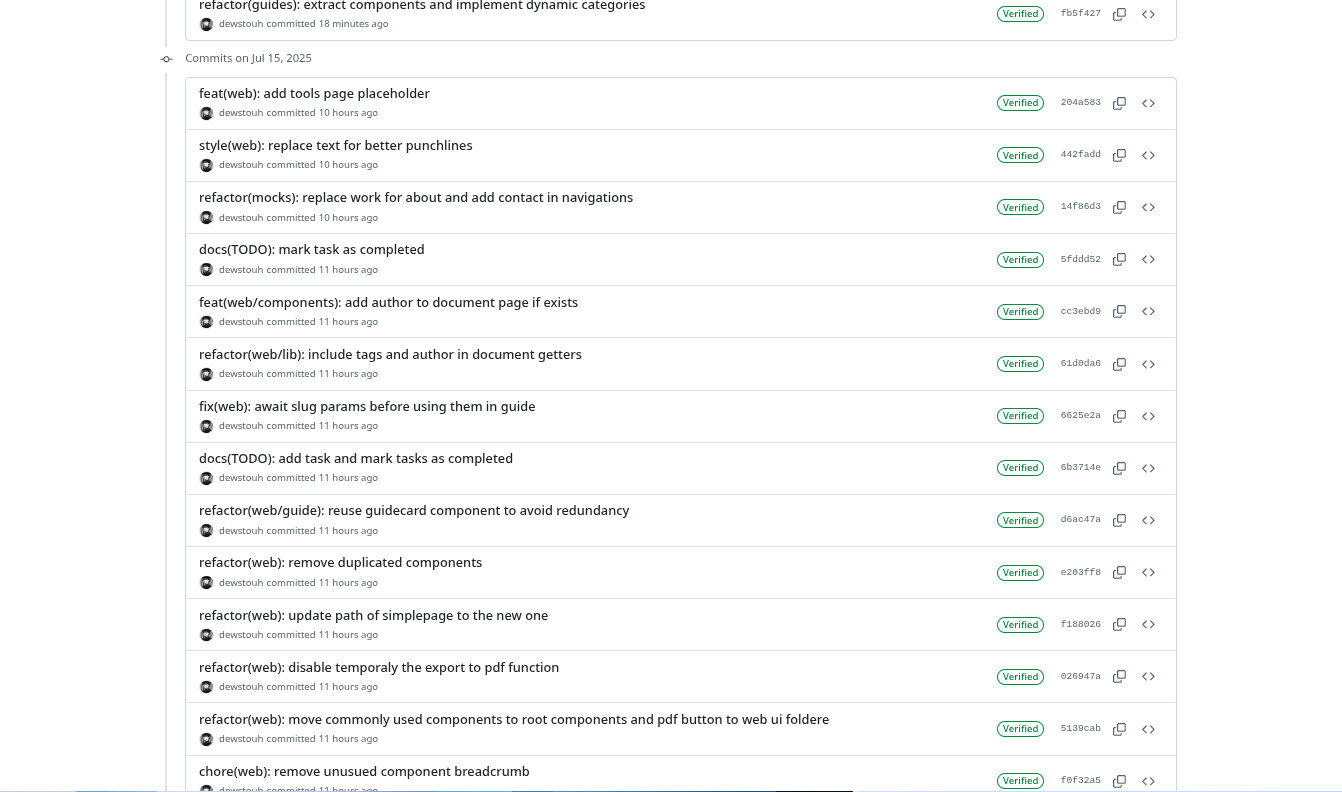
From Portfolio to Platform
Later I realized: why just build a portfolio to show off?
I decided to convert JustDiego into a platform that finds leaks, exposes inefficiencies, and automates what wastes your time and money.
Portfolios are for flexing.
Platforms actually fix what’s broken.
Nowadays, anyone can build something with AI.
But almost nobody knows how to make it production-ready, scalable, and bulletproof.
Most projects die fast because they’re built for show, not for reality.
I build for survival, not for likes.
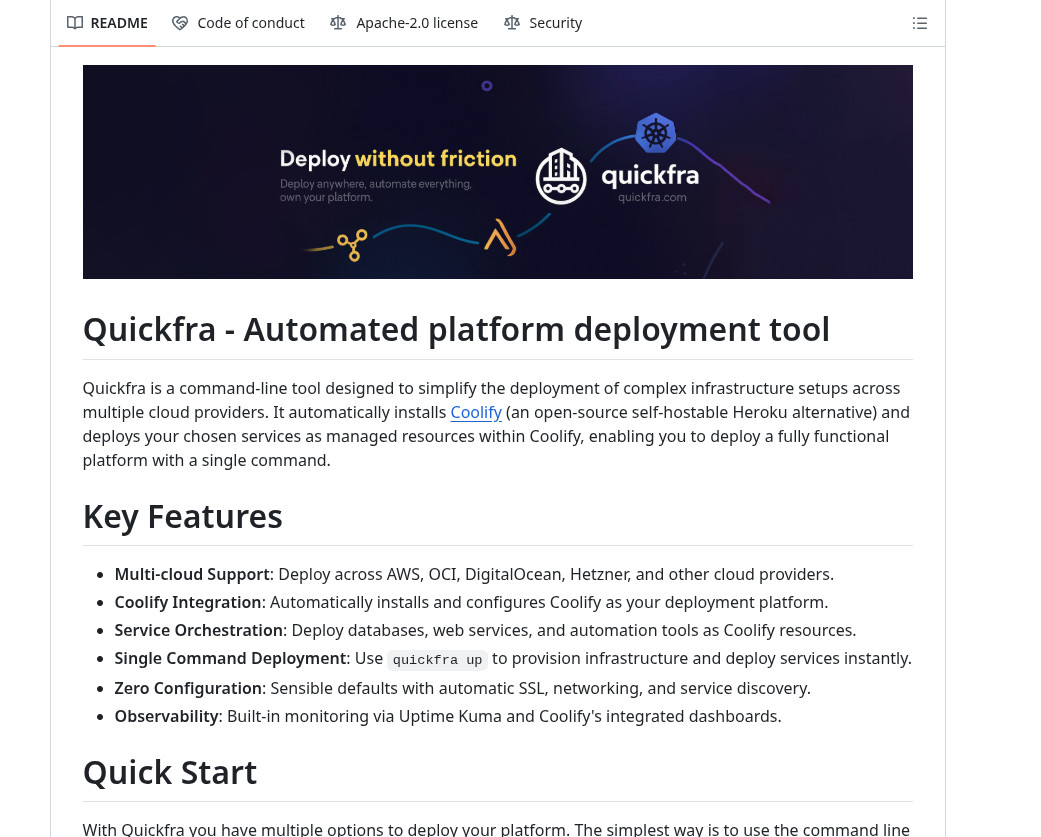
It’s not just about shipping.
It’s about scaling, maintaining, and making sure everything runs when it matters.
Anyone can launch a demo.
Very few can build something that survives real traffic, real failures, and real users.
Where It Started
I'll show you an example from myself, when I created my first project, Niby.
Just a basic Discord bot, written in simple JavaScript.
No structure, no testing, no deployment.
Just pure trial and error, learning everything the hard way.
That’s where it all started.
I loved creating this bot.
I was obsessed with shipping new features, always rushing for quick results.
All I cared about was pushing out something new, never stopped to think about quality, structure, or the mess I was building underneath.
It was pure chaos, but that chaos taught me everything.
This bot actually started to get noticed.
It was joining hundreds of servers, gaining real traction,
and that’s exactly when everything fell apart.
The sloppy code, zero testing, no real structure.
The growth exposed every mistake I made.
And it crashed, hard.
That failure was the best thing that could’ve happened.
It forced me to face the truth:
If you build like an amateur, your project will die like an amateur.
From that point, I stopped chasing features and started chasing quality, reliability, and real engineering.
So I decided to rebuild everything from scratch.
Typings, caching, automated testing for stability, and an actual architecture that made sense.
I forced myself to treat it like a real product, because it was—
every decision had to make sense for scaling, maintaining, and running in production.
Then it was time to test it in real production.
All that work, all that pain, and all that refactoring—this was the result:
The bot was now handling over 400 servers and 60,000 members, running stable and smooth on less than 300MB of RAM.
No crashes. No chaos. Just efficiency and control.

What I Learned
This proves anyone can build a project,
but not everyone can make it scale, stay stable, and actually survive under pressure.
Yes, AI is cool. It can speed up the work and help you ship faster.
But speed means nothing without real knowledge behind it.
Tools are as good as the person using them.
Work i've done
El Mundo de Niby
Started as a bot to fullfill my needs: Get my social media via commands and promote my twitch and other channels.
But I got obsessed with pushing it further. I turned that mess into an entire ecosystem: bots, tools, a public API, and, most important, a real community built from scratch.
I even made a bot that created other bots based on Paypal & Stripe payments.
Niby got so popular it reached:
-
400+ servers.
-
60,000+ real users.
Niby

Niby is open-source, check it out here
An all-in-one Discord bot used by more than 60k users across 300 servers.
The best Discord.js handler in history in English, Spanish (and 17 more languages...)
Decided to create Niby because i was tired of setting up everything manually on my Discord server community, so why not make a bot that makes it all for me instead? Managing tickets, moderating the server, auto-banning people who tries to break the community. So, that's how Niby was born, and as it worked for me, i made it public so everyone could use it.
Quickstatus

Quickstatus is open-source, check it out here
Quick Status was created out of a need for a simple, lightweight status page solution for Quickfra that could be set up quickly and easily. Many existing solutions were either too complex or bloated with features that weren't necessary for the use case. Quick Status aims to provide a straightforward, no-frills status page that can be deployed in seconds and be configured with minimal effort.
Quickfra

Quickfra is open-source, check it out here
It started as a personal project to automate the deployment of my own services using coolify and docker images, but has since evolved into a more comprehensive tool that can be used by anyone looking to streamline their infrastructure management.
By creating a guide on how to configure my VPS with all the necessary tools and services, including Coolify, Stalwart Mail, and Uptime Kuma, i wanted to it with others, but i thought "why not automate the whole process instead of just writing a guide which will make everyone follow the steps one by one and waste time?".
I was tired of setting up mail servers, monitoring tools, and other services manually, so I created Quickfra to automate these tasks. The goal is to provide a one-stop solution for deploying and managing complex infrastructure setups with minimal effort.
Working with me
If you have a challenge with your business or you’re building something and need a solution just send me a message: [email protected] or fill the contact form.
It doesn't matter the technologies your project uses. Let’s talk, figure it out together, and actually solve what’s holding you back. No formalities, just honest work and clear results.
